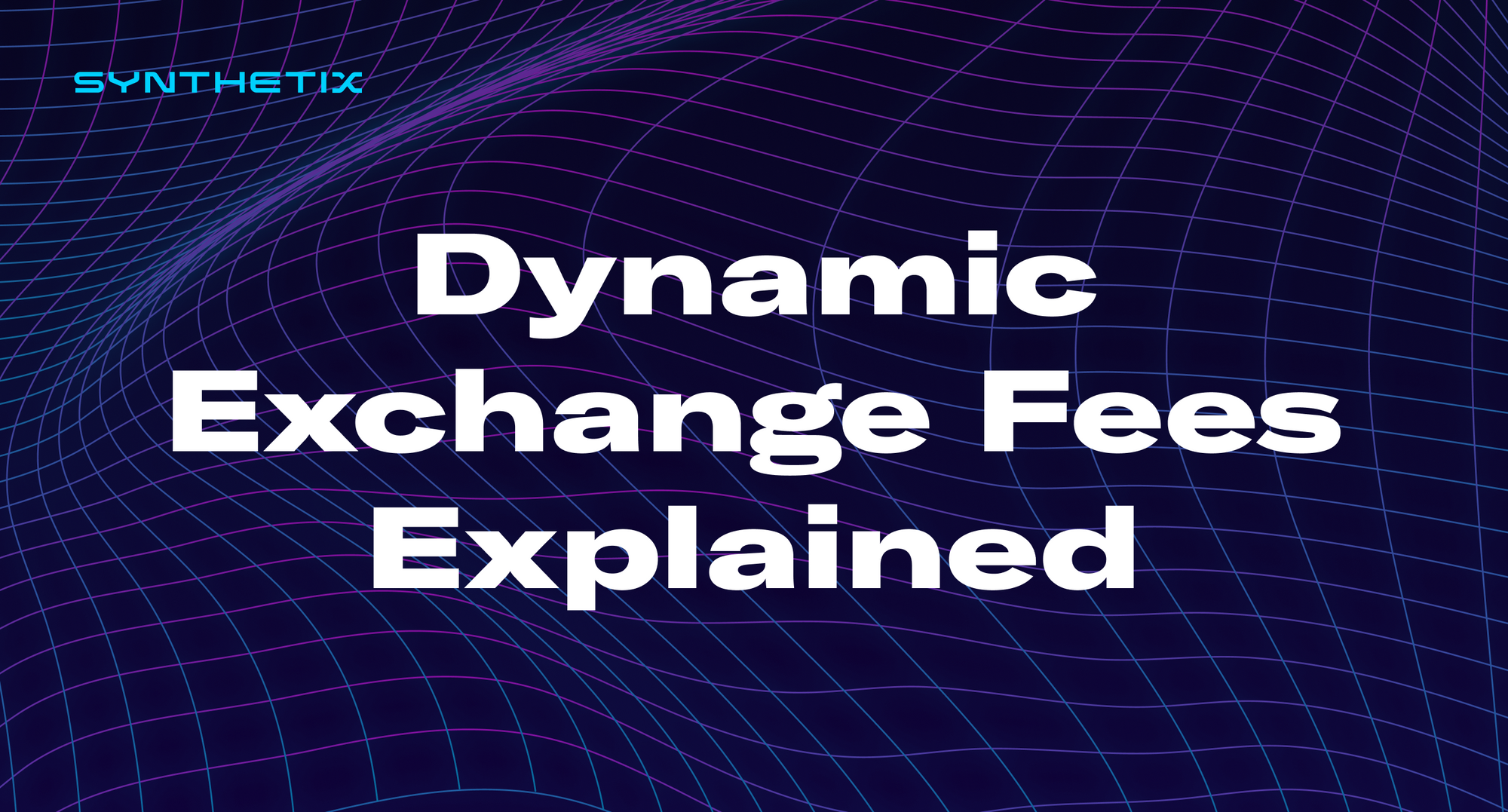Dynamic Exchange Fees Explained

Frontrunning
First off, the most crucial part of this is defining what Frontrunning is as it relates to Synthetix Synthetix utilizes Chainlink oracles to update prices for each Synthetic asset offered. Due to market volatility, it is possible to trade before an oracle can update its price, guaranteeing a risk-free profit for frontrunners. A risk-free profit for traders means that SNX stakers incur a direct loss every time someone successfully front-runs a price update. It’s imperative to neutralize these.
There have been many past changes made to protect against this kind of trading behavior. However, dynamic exchange fees are the best proposed and implemented change so far that backtesting has been shown to thwart frontrunners without sacrificing composability.
What are Dynamic Exchange Fees
Put simply; dynamic exchange fees are additional fees paid by traders under volatile market conditions that neutralizes front-running opportunities and protects stakers.
Rather than relying on higher base exchange fees for all traders, fees will dynamically adjust during periods of market volatility to ensure that front-running opportunities are neutralized immediately.
Lowering base exchange fees significantly for all supported Synths is likely feasible with this fee in place. However, this discussion of fees is a conversation for the Spartan Council and the overall decentralized governance process for Synthetix.
How do Dynamic Exchange Fees Work?
During periods of high volatility in the crypto markets, a dynamic fee will be levied upon trades to ensure that there are no front-running opportunities present for traders. Once market volatility subsidies, the dynamic exchange fee reverts to zero.
Before we get into the deep technicals, here’s a quick summary of how dynamic exchange fees work. During times of price instability, the dynamic fee is incremented higher according to observed volatility. So as volatility builds, it will accumulate in the dynamic fee. It also has a built-in decay factor, meaning that the dynamic fee will decay exponentially over time when volatility subsides.
Then comes some of the deeper technicals for dynamic exchange fees:
At the beginning of each epoch, a dynamic fee gauge contract measures the asset oracle price change between epochs. If this difference is more than twice the prescribed deviation threshold (minimum frontrunnable threshold), the dynamic fee is increased by the size of the differential.
In the subsequent epoch, the dynamic fee is reduced by a decay factor but again subject to additional boosting if price movement between epochs exceeds prescribed thresholds.
For more technical information about Dynamic Exchange fees, refer directly to the SIP - https://sips.synthetix.io/sips/sip-184/.
How are Dynamic Exchange Fees Shown when trading?
If you are trading directly on Kwenta, a small icon will show the Dynamic Exchange fee charged for your trade. If it is not shown, no dynamic exchange fee is levied.
In the below picture, we’ve reduced the base exchange rate (.40% vs .15%) to a lower fee as this solution makes lowering base fees a possibility.
Take advantage of these newly reduced fees by heading over to Kwenta!
Any questions or Comments?
If you've got any comments or questions about this update, please join the conversation in our Discord.

